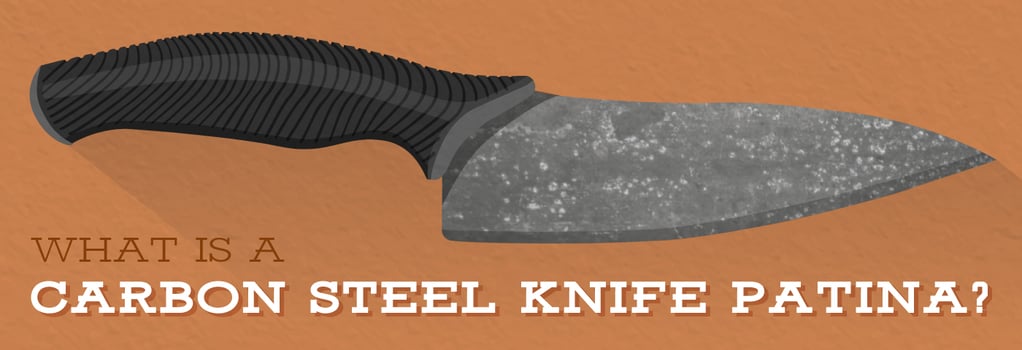Why Do Carbon Steel Knives Turn Black?

A good knife is often a chef's most-prized possession, and many chefs have strong opinions about what makes theirs the best. One big difference between knives is the very metal they're made of. The majority of knives are made from easy-to-maintain stainless steel, but some chefs prefer knives made from carbon steel, which they believe hold an edge longer than stainless steel cutlery. There are also those who claim they're easier to sharpen. Along with those benefits of carbon steel knives comes a number of caveats, but this type of cutlery can provide years of reliable service given some simple maintenance.
Just like stainless, carbon steel is an alloy of iron, carbon, and a few other elements. Carbon steel knives are more prone to oxidation than stainless steel pieces. Most of us are familiar with oxidation in the form of rust, which carbon steel is particularly prone to if it isn't kept dry and clean, but carbon steel is also susceptible to another type of oxidation that doesn't affect stainless steel.
Magnetite is a less destructive type of oxidation that affects just the surface of carbon steel. This process is what's responsible for developing the carbon steel patina that changes the color of the metal from its shiny chrome-like finish to a dull gray. Any carbon steel connoisseur will be familiar with magnetite as the pattern of streaks, spots, and swirls that a well-used carbon steel blade will develop over time.
Some folks don’t like the appearance of a carbon steel knife's patina and assume that it's harmful to the blade or unsafe for food. Far from detrimental, this patina is harmless, and it actually helps protect the blade from further oxidation, including rust, so many carbon steel experts have developed ways to "force" a carbon steel patina.
A popular way to jumpstart a carbon steel patina is by soaking the blade in hot vinegar1 for several minutes. This process will give the blade a patina that may otherwise take weeks or months to develop, depending on how often you use your knife. Another method involves rubbing yellow mustard on the blade, often in a particular pattern to decorate the blade.
The jury is out on whether a forced patina is as beneficial as one that develops over time. Researchers at Cook's Illustrated2 found that forcing a patina using the vinegar-soaking method actually caused the blade to rust more easily after subsequent uses and gave it a "grippy" finish that created extra drag as it sliced through food. They recommend instead that users continue to care for the knives as they normally would, washing and drying the knife thoroughly after each use, and waiting for a patina to naturally develop.
Caring for a Carbon Steel Knife
- To protect the edge of your knife, store it in a knife rack or holder where it will never touch other utensils. Never store knives in a drawer.
- Wash, rinse, and dry your knives immediately after you finish using them. Never let carbon steel knives rest with debris on them and never let your knives air dry. Doing so will all but guarantee that they'll rust.
- You may force a carbon steel patina by letting your knife soak in vinegar or by rubbing it with mustard, but the value of this approach is the topic of debate.
- Some advise applying a light coat of food-safe mineral oil to the blade each time you store it to mitigate the effects of oxygen and moisture in the air.
References
- How To: Force a Patina on Knife Blades. Topham Knife Company. Accessed August 2023.
- Carbon Steel Knives: Why a Patina Matters. Cook's Illustrated. Accessed May 2017.

